Best gimbal stabilizer for DSLR or mirrorless cameras
In this guide we’ll be looking at the best gimbal stabilizers for DSLRs and mirrorless cameras. However, we should note that we haven’t included gimbals for smartphones in this article.
But before we dive into our favourite gimbals, lets take a quick look at what a gimbal is and how it works.
Mục Lục
What is a gimbal?
A gimbal is a device typically consisting of rings or brackets that pivot in one direction in order to keep a device steady. For videographers, in particular, a gimbal stabilizer is a really useful means for shooting handheld and producing steady footage.
In essence, a gimbal is a support on which you mount your camera to the inner-most bracket. The surrounding brackets then rotate around your camera, allowing that inner bracket to keep level and rotate on a single axis.
In other words, your camera almost looks like it’s floating on air when mounted to a gimbal. The stabilizer is programmed to detect your deliberate movements (eg a wide pan) from the small vibrations and non-deliberate camera shake that is inevitable when shooting handheld.
What cameras can you use a gimbal with?
There are gimbals designed for whatever camera you may be filming with. For instance, DJI makes the OSMO Mobile 3 for use with smartphones. And there are many other such models on the market.
There are a wide range of gimbals designed for use with DSLRs and mirrorless cameras. There are even gimbals for action cameras and, of course, cinematic cameras.
In this guide we’ll be looking at the best gimbals for video for use with DSLRs and mirrorless cameras. In future guides we’ll look at the gimbals available for other devices.
What are the best gimbal stabilizers for video?
DJI Ronin RS3 Pro
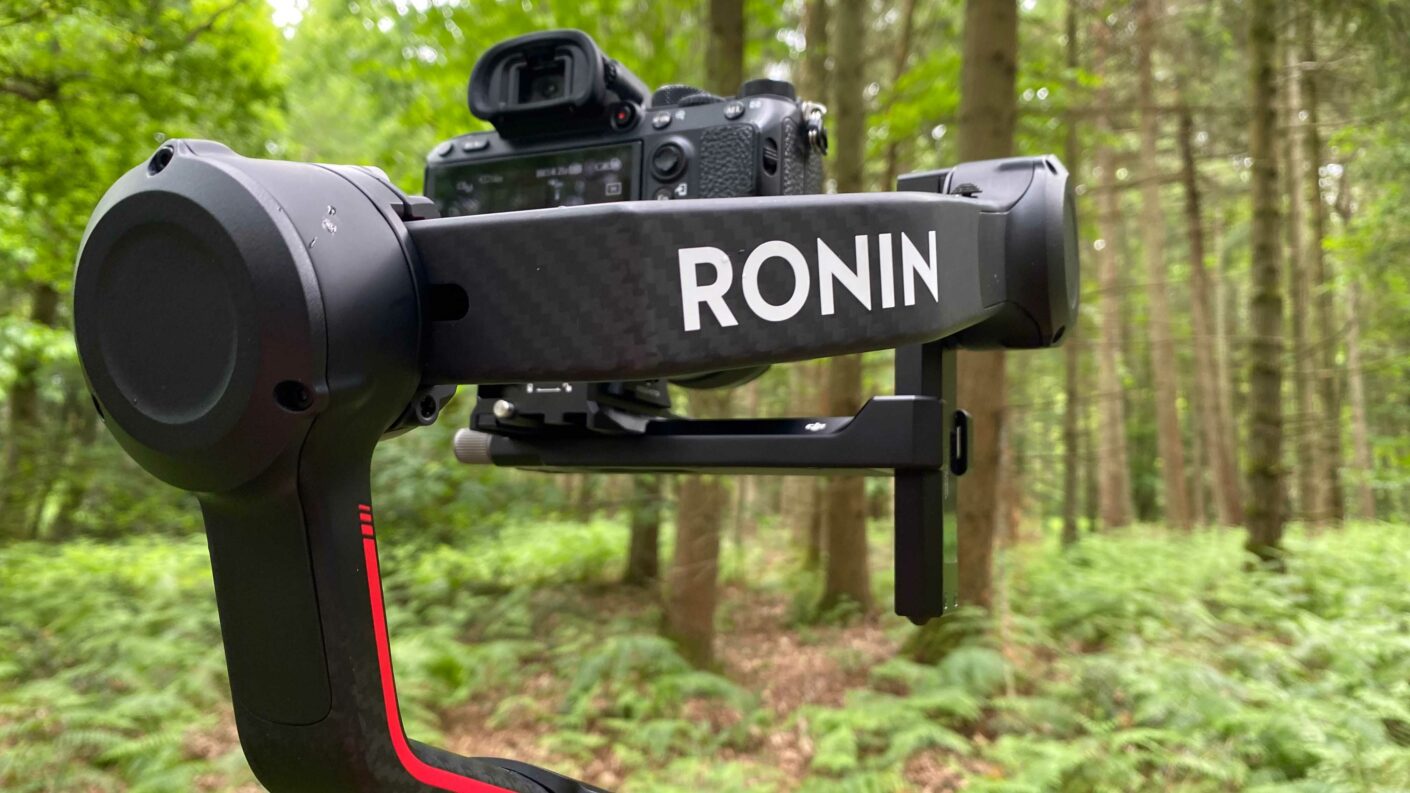
Specification
-
Mounting ports :
RSA/NATO Ports, 1/4-inch, cold shoe, USB-C
-
Power :
1950 mAh 15.4v, LiPo 4S
-
Run time :
12 hours
-
Charge time :
1.5hrs
-
Connectivity :
Bluetooth, Wifi, USB
-
App compatibility :
iOS, Android
-
Payload max :
4.5kg
-
Mechanical range :
pan 360º, Tilt -95 to +240º, Tilt -112 to 214º
-
Weight :
1741g with grip, tripod and plates
In just a short amount of time, DJI has evolved its original single-handed gimbal stabiliser, packing it with advanced technology in a small, comfortable form factor. The Ronin RS3 Pro provides solid support for all mirrorless and DSLR cameras and is fast to react to your movements, with plenty of onboard adjustments and features.
What really opens up the gimbal’s creative possibilities, though is its flexibility to attach myriad accessories. There’s also compatibility with the LIDAR AF system that makes the Ronin RS3 Pro more than just a small gimbal, but rather a complete filming rig for those using manual focus cine lenses.
It is more expensive than its rivals, and some of its best accessories are equally expensive, but as it stands now looking at the market, the DJI Ronin RS3 Pro is the best gimbal stabiliser for both amateurs and small production companies alike.
Price when reviewed
£469
$469
For
- Compact
- Powerful
- Huge potential through accessories
Against
- More expensive than rivals
- Some accessories are equally expensive
Zhiyun WeeBill 3
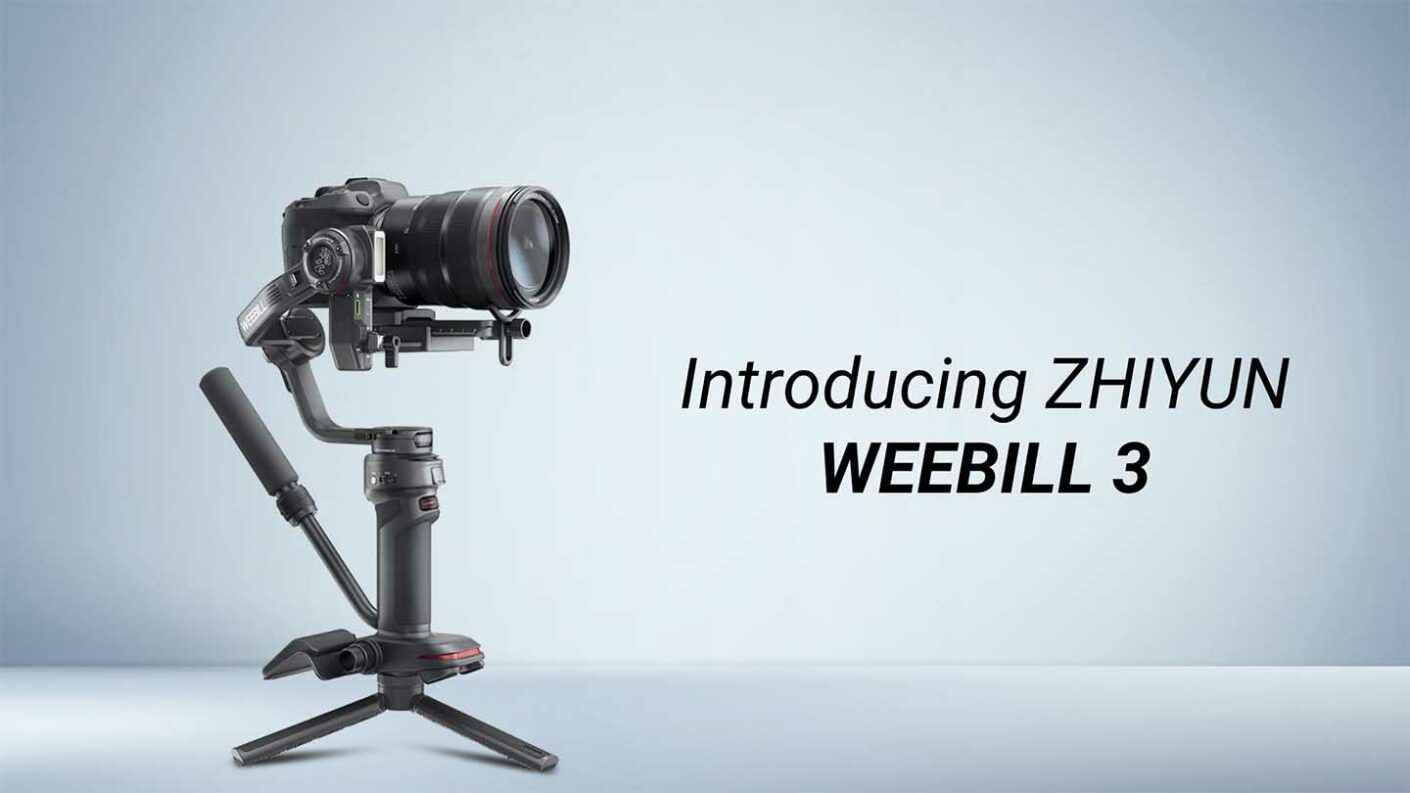
Specification
-
Built-in lamp 1000 lumen:
Built-in lamp 1000 lumen
-
Built-in mic yes:
Built-in mic yes
-
Battery 7,800:
Battery 7,800mAh
-
Usage 21 hours per charge:
Usage 21 hours per charge
-
Quick-release system yes:
Quick-release system yes
There isn’t a whole lot of change in gimbals from generation to generation. Most of the improvements come in the interior technology. But the WeeBill 3 enhances the abilities of the WeeBill 2 with a new design and ergonomics that vastly enhance comfort, making the user experience of this lightweight, yet powerful, single-handed gimbal stabiliser even better.
As well as the streamlined design, the WeeBill 3 is fast to react and offers plenty of features to help you both shoot stills or even produce motion video effects that you can access through the ZY Play App.
The third iteration does lose the screen and returns to a mono display, but this isn’t a huge loss in practice. The ergonomic changes ore than make up for it, as this is one of the most comfortable gimbal stabilisers to use with any camera.
Price when reviewed
£449
$391
For
- Comfortable to use
- Lightweight
- Powerful
Against
- Video transmitter needed for live feed
ZHIYUN Crane M2 S
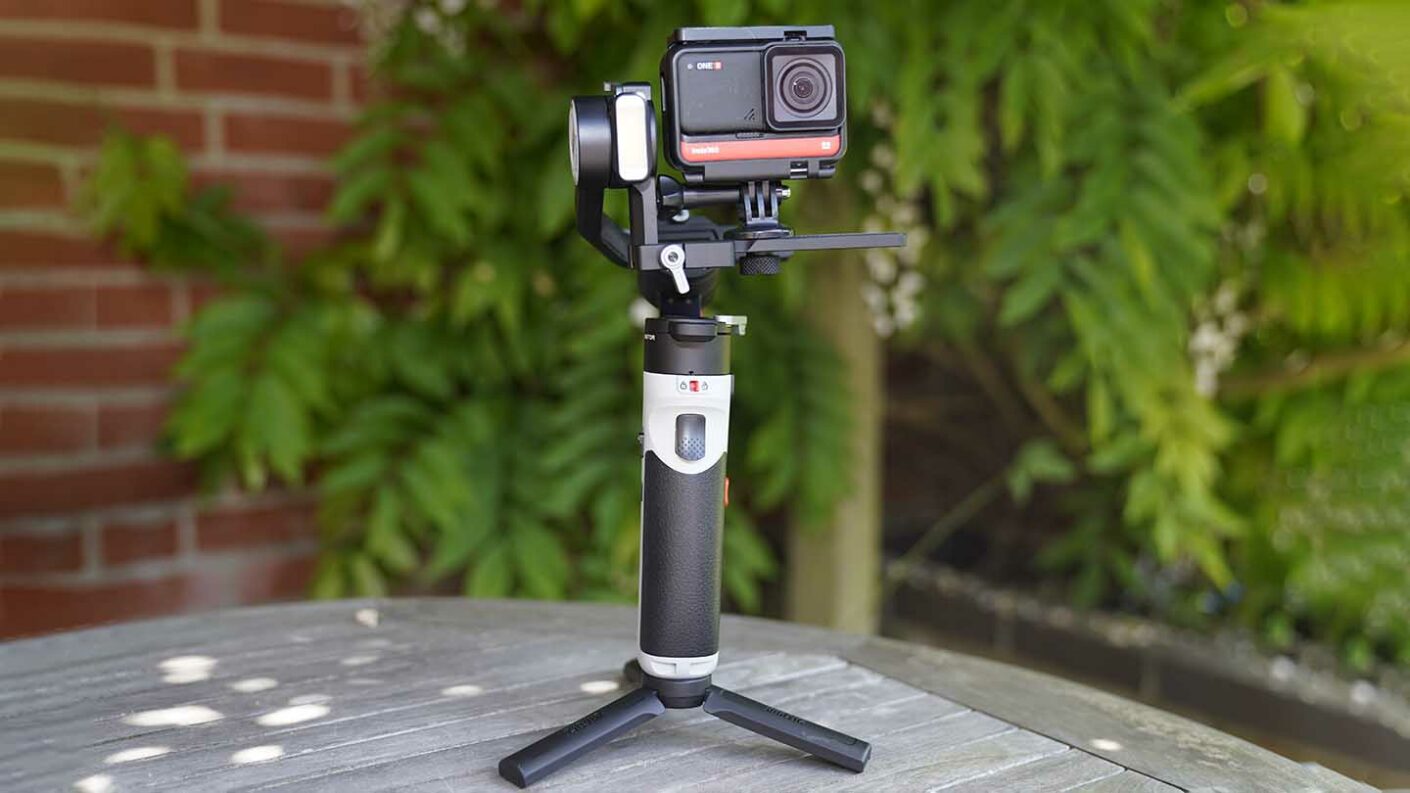
Specification
-
Tilt :
320º
-
Roll :
320º
-
Pan :
360º
-
Dimensions :
240 x 68 x 150mm
-
Weight :
549g
-
App :
iOS and Android
-
Battery runtime :
10h 35 mins
-
Charge Time :
1h41
-
Modelling lamp brightness :
1000 Lumen 5 levels of brightness
-
Payload limit :
check compatibility list as a rough guide
The Zhiyun Crane M2 S can support a smallish mirrorless camera, but this is really its tipping point for balancing weight. That said, in our test we found it was powerful enough to hold a Sony A7 III with a 35mm f/1.4 lens, and this setup is pretty comparable to most mirrorless cameras people are using these days. So on that basis, we’re including it here in our list of best gimbal stabilisers for DSLR and mirrorless cameras.
Its diminutive size means it is lightweight and quite comfortable to hold for long periods. At just under £300, it won’t break the bank and has enough features for even serious filmmakers to work with.
At this price, we really like the M2 S a lot. It’s worth every penny for what it does, and despite its lower max payload, the build quality is solid and offers plenty of flexibility. The £100 difference between the budget Zhiyun Smooth 5, Zhiyun M2 S and the M3 might seem small to professionals, but that monetary leap is huge for many up and coming filmmakers. To have the choice of this quality gimbal at these price increments is just fantastic.
Price when reviewed
£259
$275
For
- Affordable
- Built-in modelling lamp
- Fully featured app
Against
- Limited camera control
- Low max payload limit
DJI RS 2
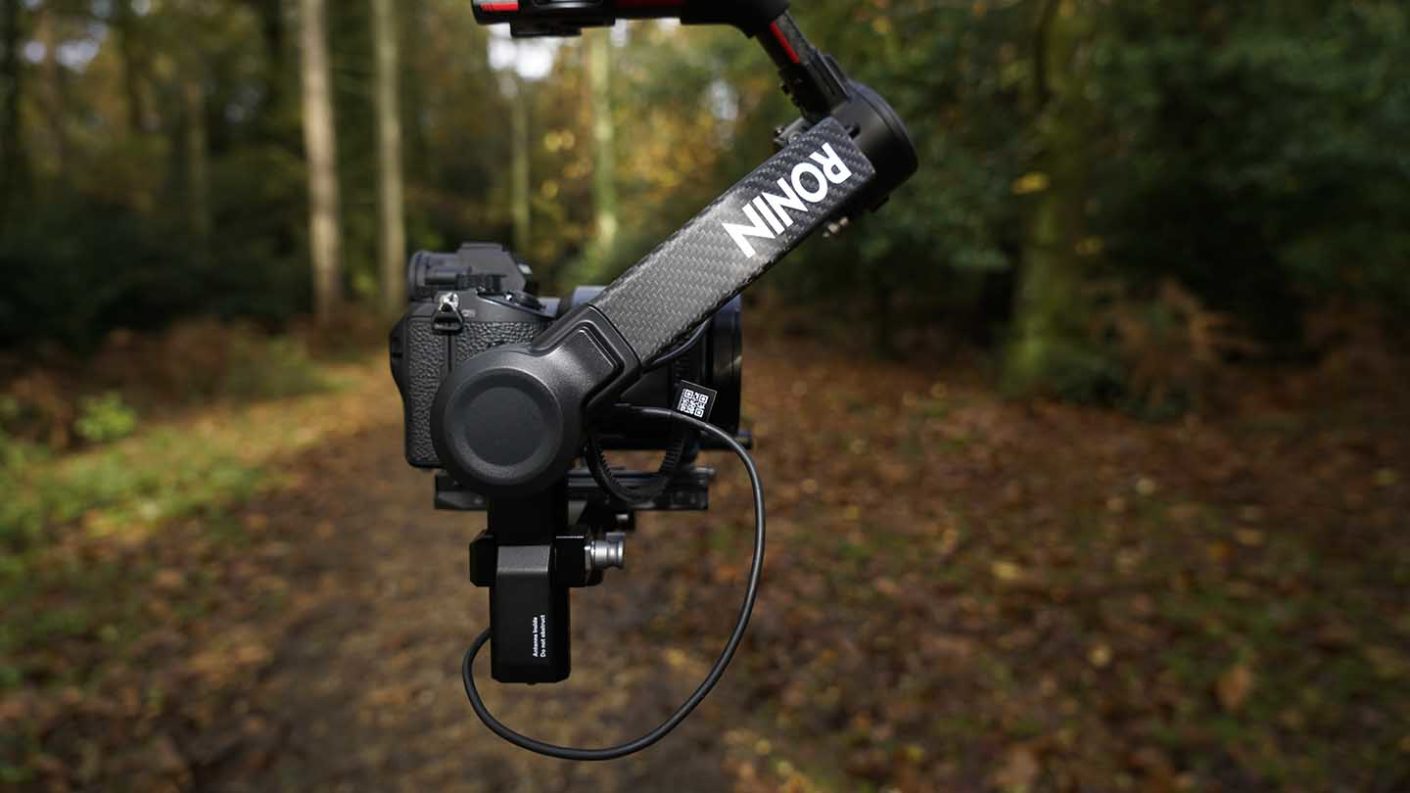
Specification
-
Accessory Connections:
RSA/NATO ports, 1/4-inch, Cold shoe mount
-
Video transmission/follow focus motor port :
USB-C
-
Battery:
BG30-1950mAh-15.4V
-
Connections:
Bluetooth 5.0; USB-C
-
Payload:
4.5kg
-
Maximum Controlled Rotation Speed:
Pan, Tilt, Roll: 360º
-
Weight:
Approx. 960 g
There are little if any design similarities between the new DJI RS 2 and the Ronin-S. The metal arms have all been replaced by a Carbon Fibre monocoque design, and every other element from the joystick, mounting points, focus wheel and grip have been improved and enhanced.
This is not an update with a few tweaks to the Ronin-S design; this is a complete reworking. The most significant update aside from the dramatic design change is the payload which has increased from 3.6kg to 4.5kg. It’s also lighter than the Ronin-S coming in at 1kg 0.81kg lighter.
That’s not all it is also smaller, which has been made possible by the advances in technology. The new RS 2 measures in at 410 x 260 x 195mm including the grip but without the extension, grip added.
The design also sees a huge series of additions, including a 1.4-inch full-colour LCD touchscreen; this enables you to flick through options and settings quickly.
Another big change is the addition of professional RSA/NATO ports that enable the new RS 2 to be incorporated into larger, more complex rigs or control systems.
For those of us not working on multi-million dollar productions, it’s good to see that there are still more common ports and connections including 1/4-inch mounting hold and cold shoe mount.
As with the previous Ronin-S, there are several possibilities for wired connections; these include Video transmission/follow focus motor port (USB-C), RSS camera control port (USB-C) and Follow Focus motor port (USB-C). As all of these ports are USB-C, so I was glad to see that DJI has marked which port is which.
As before the operating time in ideal conditions is 12 hours, and a BG30-1950mAh 15.4 LiPo 4S is used to power the RS 2. This has a charging time of 1.5h, which isn’t at all bad.
As ever the RS 2 offers a Bluetooth connection between the gimbal and the Ronin App available for both iOS and Android devices. This Bluetooth connection utilises the latest Bluetooth 5.0 technology.
The maximum controlled rotation remains the same as the Ronin-S at 360º through all axis. There is some change with the mechanical endpoints with the tilt axis changing from: Ronin-S 205° to – 115°, RS 2 -112° to +214° and Roll; Ronin-S 230° to – 90°, RS 2 -95° to +240°.
Read our DJI RS 2 Review
Price when reviewed
£839
$999
For
- Small and light weight
- Decent payload
- Fully featured
Against
- Carbon is the wrong material
- Still a mess of wires
- Maybe too small
Zhiyun Crane M3
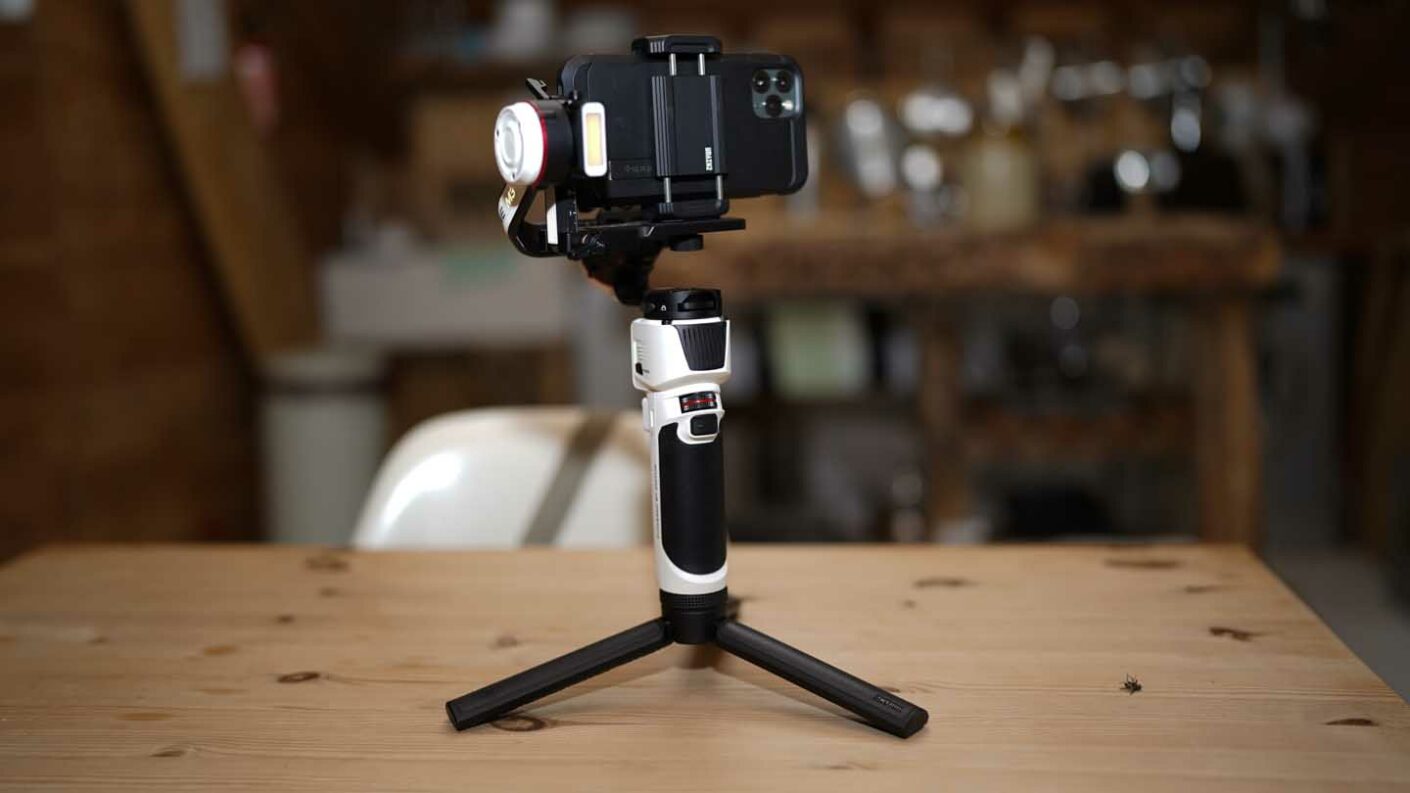
Specification
-
OLED:
1.22-inch
-
Modelling light:
2600-5400K 650-950 lumens
-
Quick-release plate:
Yes
-
Charge time:
2 hours
-
Battery life:
8 hours
-
Dimensions:
208x102x290mm
-
Weight:
700g
-
Max Payload:
720g (subject to update)
Like the M2 S above, the Crane M3 is at its best with an action camera or smartphone mounted, but we used the gimbal with a Sony A7 III in our test, and it performed admirably. But this is probably its upper limit of weight that it can balance. But with mirrorless cameras getting smaller and smaller each year, the Crane M3 remains a solid option for many photographers.
We love it because of its size and weight, but also because it’s easy to set up and use. And with its feature set, it’s a great option for those who are just getting into filmmaking. Performance-wise the power of the motors is impressive, smoothing out the usual wobble associated with handheld footage. It’s also incredibly easy to use with the direct controls on the handgrip.
Price when reviewed
£369
$369
For
- Small size
- Lightweight
- Easy to set up and use
Against
- Limited weight option for mirrorless camera users
- Expensive compared with the M2
ZHIYUN Crane 2S
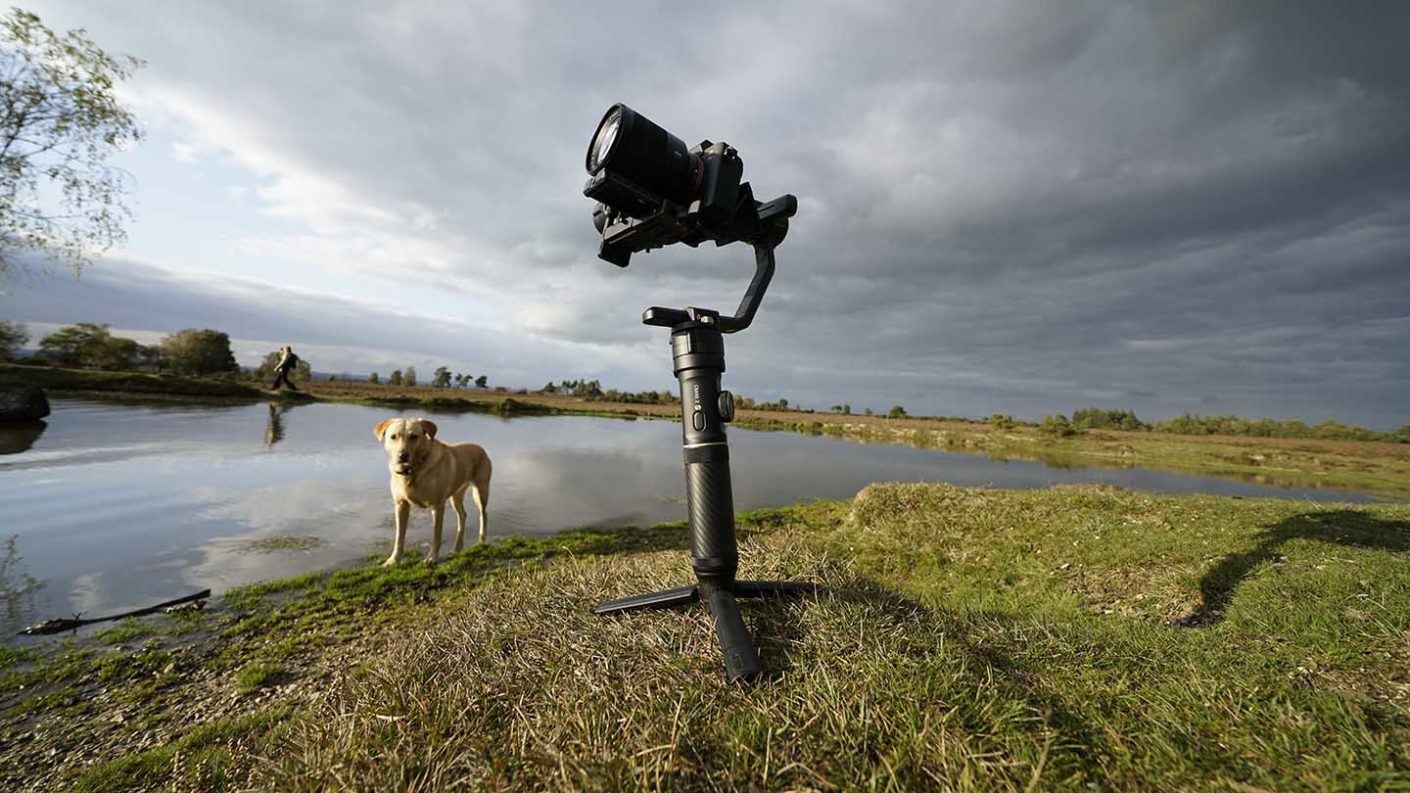
Specification
-
Tilt mechanical range:
-91º – +155º
-
Roll Mechanical Range:
57.5° – +237.5°
-
Pan Mechanical Range:
360º
-
Tilt axis controllable angle:
-80° – +135°
-
Roll axis controllable angle:
-35° – +35°
-
Pan axis controllable angle:
-180° – +180°
-
Battery Capacity:
2600mAh
-
Bluetooth:
Bluetooth 5.0
-
Product Net Weight:
1880g (excluding tripod and batteries)
-
Operation Time:
12h
Price when reviewed
£649
$534
For
- Easy to setup
- Great App
- Easy to switch between modes
Against
- Not as refined as some gimbals
- Plates take a while to loosen up.
- Rear roll motor obstructs part of camera screen in the supplied set-up
Gudsen Moza Air 2
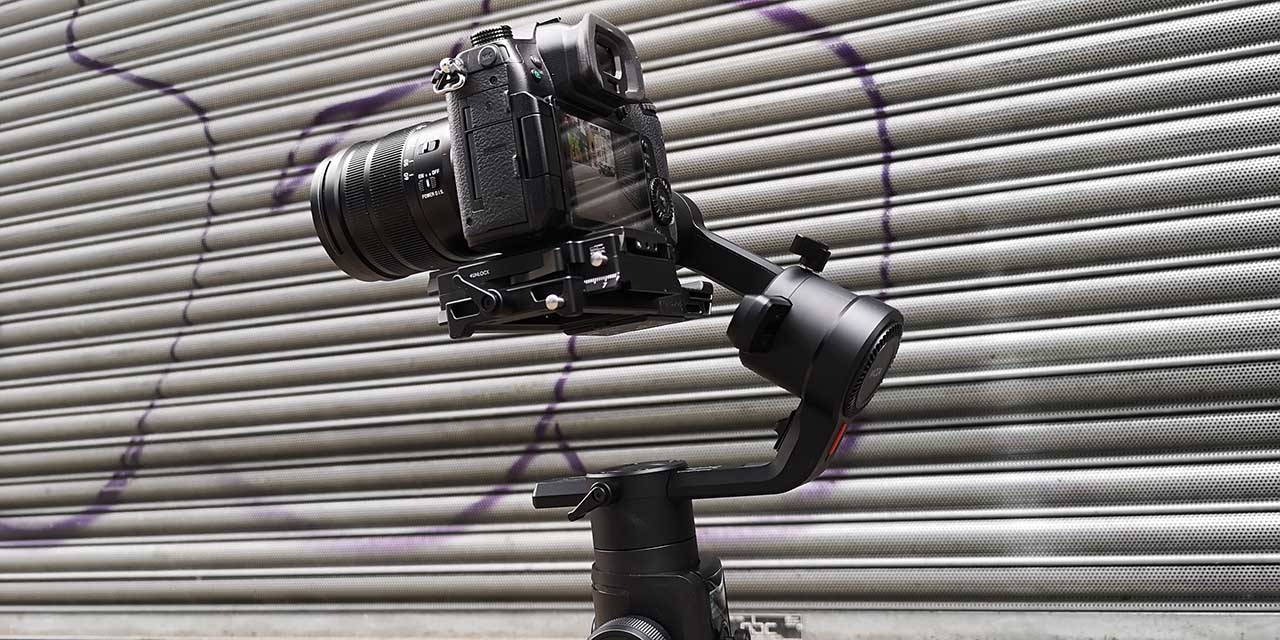
Specification
-
Payload:
4.2kg (9.25lbs)
-
Battery Life:
16-hour battery life
-
Power:
Four Li-ion 18650 replaceable batteries
Aimed at DSLR and mirrorless camera users, the Moza Air 2 from Gudsen is quite possibly the most underrated stabilizer on the market today. Priced well below the DJI Ronin-S but offering very comparable features, the Moza Air 2 offers a slew of nice design touches, such as easy access to your camera’s direct controls, to customisable buttons and wheels for different functions.
Gudsen really has thought through most eventualities in the Moza Air 2 design. As we mentioned, the tilt and roll axes bars are angled as such that you can access your camera’s controls quite easily. You also get an extra baseplate in the case that allows you to give your camera some extra height if it’s too diminutive to be able to balance. The joystick on the controller also makes it very easy to use.
Build quality is very solid, and – most importantly – the gimbal is very easy to balance your camera on. The Moza Air 2 might be the best balance of value for money on our list of the best gimbal stabilizers for your camera.
- Click here to get the Moza Air 2 direct from Gudsen
Read our Gudsen Moza Air 2 review
Price when reviewed
£459
$419
For
- 4-Axis and 8 Follow Modes
- Quick to set up
Against
- Pricier than other models
Benro RedDog R1
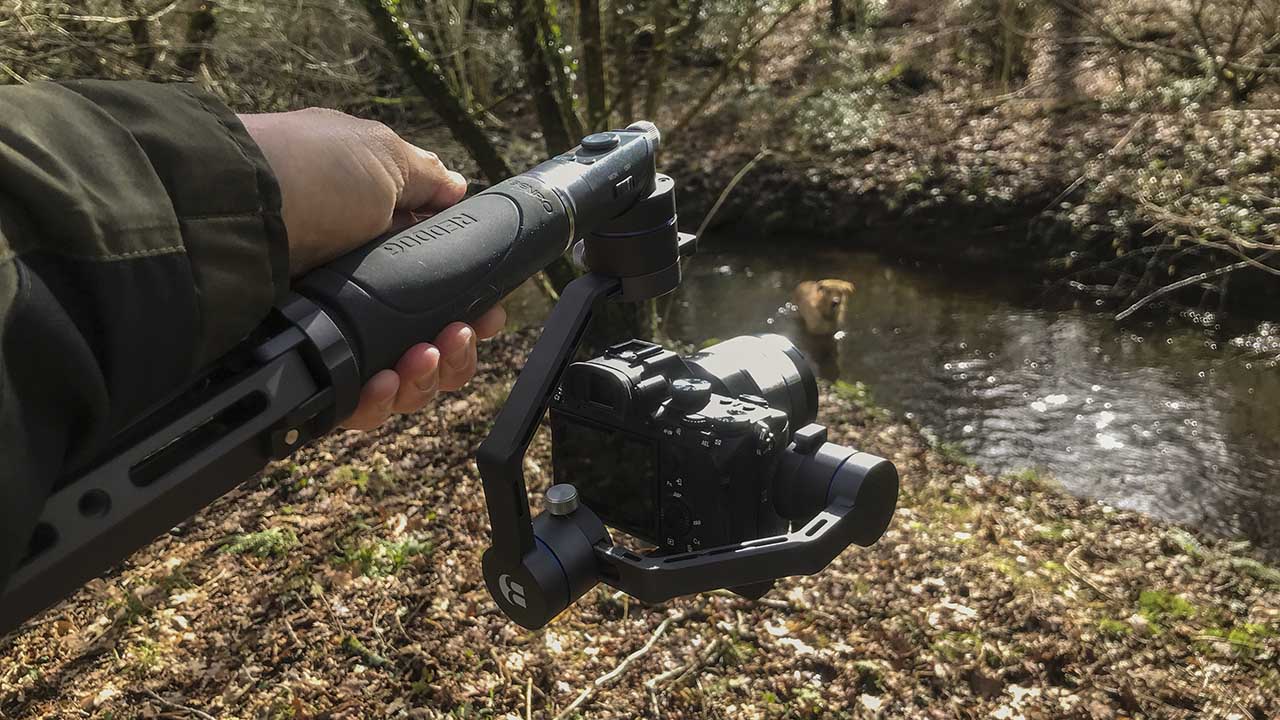
Specification
-
Payload:
Up to 1.8kg
-
Swivel Handle :
Designed for different filming angles and is compact for travel
-
Battery Life:
The R1 will last for 12 hours on a single charge
-
Weight:
879g
-
Operating Modes:
Universal Follow/Locked Down/Horizontal Follow
Single-handed motorised stabiliser gimbals seem to be coming thick and fast and it’s no surprise once you see how they can transform your footage. The Benro RedDog R1 is one of the most impressive yet, being lightweight, relatively inexpensive and packed with features.
There’s a lot to like from the outset. Strip away the cardboard packaging and a semi-hard transport case is revealed. Inside neatly laid out is the gimbal itself, bar a charge and balance all set and ready to use.
The design isn’t as finessed as the likes of the DJI Ronin-S, but then this is a far lighter weight product so doesn’t need the muscle. It’s designed for Mirrorless cameras, unlike the Ronin-S which can hold more than most owners.
Read our Benro RedDog R1 Review
Price when reviewed
£349
$255
For
- Joystick for 3-axis movement
- Great all-rounder
- Very smooth movements
Against
- Motors designed mainly for mirrorless cameras
- App not as refined as its competitors
DJI Ronin-SC
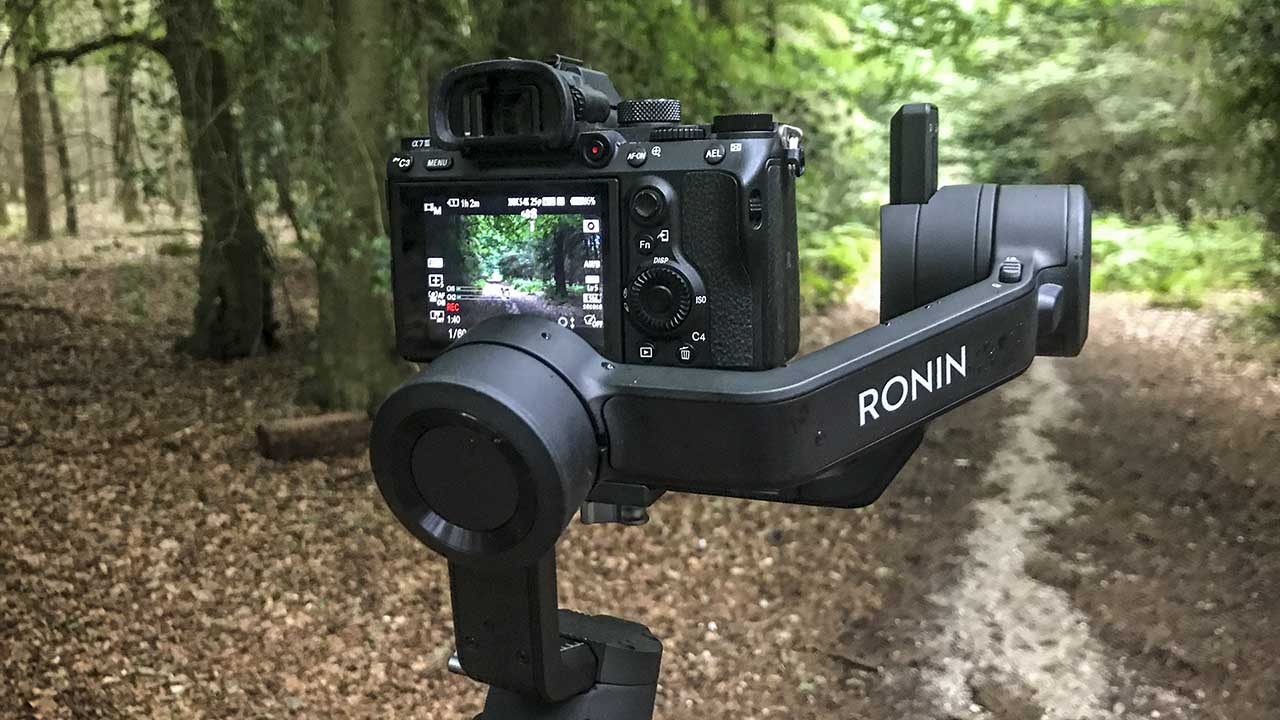
Specification
-
Payload:
2kg
-
Mount:
1/4-inch or 3/8-inch mount hole for your camera
-
Charging:
USB-C
It’s a gimbal stabiliser like the Ronin-S just smaller, lighter and more agile. It’s similar to it’s larger sibling with design tweaks and a lighter payload designed for the mirrorless generation.
What makes the Ronin-SC stand out, however, is not the size or weight: it’s the power of the app that comes with it. This transforms the stabiliser from a filming rig to a stills rig with ease, enabling you to capture shots that would otherwise be impossible.
If you don’t already own the Ronin-S then the Ronin-SC is an excellent mirrorless solution, if you do own the Ronin-S, then this is just a lighter weight version that easier to travel with.
Read our DJI Ronin-SC review
Price when reviewed
£225
$329
For
- Camera control port
- Accessories port
- Lightweight and portable
Against
- 1.6kg less payload than the Ronin-S
DJI Ronin-S

Specification
-
Product type:
Motorised stabilising gimbal
-
Weight:
3.2lb (gimbal only), 4.0lb (including gimbal and grip)
-
Dimensions:
202 x 185 x 486mm
-
Load weight:
3.6Kg
DJI’s three-axis gimbal was one of the most anticipated camera accessories of 2018, and it comes loaded with features. Smooth fluid footage is just part of the story. A joystick on the handle let you to change the camera position to help frame your shot. Dedicated buttons enable you to toggle between SmoothTrack profiles or to begin and stop recording.
There’s also a Focus Wheel, which you can mount on either side of the Ronin’s handle. Battery life will give you 12 hours on a single charge.
Features such as the new Push Mode lets you adjust the pan, tilt and roll axis by hand. There’s also an Auto-Tune function that monitors the motors changing the strength and speed as needed, all helping to speed up set-up.
The Ronin-S also has a companion mobile app that further enhances the gimbal’s features. These include advanced camera moves such as Panorama, Motion lapsed, Timelapse and Track.
- Read our DJI Ronin-S review
Read our DJI Ronin-S review
Price when reviewed
£400
$479.00
For
- Simple set-up
- Enables incredibly smooth video
- Solid construction
Against
- Quite heavy for a single-handle unit
- Not compatible with all cameras so check the DJI website















![Toni Kroos là ai? [ sự thật về tiểu sử đầy đủ Toni Kroos ]](https://evbn.org/wp-content/uploads/New-Project-6635-1671934592.jpg)


